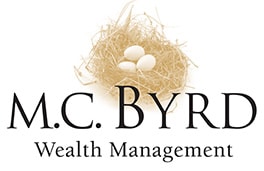During a recent visit to Mount Rainier with my wife, we took several hikes at trailheads within the park.
Afterward, we ate lunch at the lodge when a group of dedicated climbers arrived.
Their equipment and demeanor indicated they were there for more than the view.
In contrast, my wife and I stopped at REI the day before to buy her a pair of hiking sneakers.
High Earners’ Retirement Challenge
Our differing journeys that day bear similarities to high earners’ retirement savings journey.
High earners need more than traditional 401(k)s and IRAs to meet their goals.
Like trying to climb Mount Rainier with running shoes, you may progress, but you won’t reach the top.
In this blog post, we will discuss:
- Why the usual retirement savings plan doesn’t fit high earners
- How to fix this problem
- Next steps you can take to close your retirement savings gap
The High-Income Earner’s Dilemma
401(k)s and IRAs fall short for high earners.
The retirement plan industry recommends saving 15% of your income for retirement.
In 2024, you can contribute up to $23,000 to your 401(k).
If you are over 50, you can contribute an extra $7,000.
This means a 50+ saver earning $300,000 or more can only save 10% of their income in a 401(k).
Solving The High Earner’s Dilemma
If you find yourself in this spot, there are solutions available.
High earners have an array of options at their disposal.
Here are a few:
Cash balance plans
Imagine a retirement plan that is like a traditional pension but works like a 401(k).
It’s called a cash balance plan.
It’s a powerful tool for high-income earners.
Why?
You can defer $100k+ of income every year.
If you contribute less, it ceases to make sense from a cost standpoint.
Non-qualified Plans
Next, let’s talk about Non-Qualified Deferred Compensation Plans.
An NQDC plan allows high earners to defer unlimited income – and taxes – to a future date.
High earners plan when to pay taxes based on their goals.
Top executives and management teams use these plans to fill their savings gap.
It offers flexibility and savings that traditional retirement plans can’t match.
Maximizing the value of your business
Own a business?
It likely makes up 85% or more of your net worth.
Consider its value as part of your retirement plan.
Focus on profit, growth, and market position to increase business value.
When you sell, its proceeds will fund your retirement.
Next Steps
- Seek Guidance: Don’t traverse this complex terrain alone. Consult with financial advisors who specialize in high-income retirement planning.
- Learn More: Dive deeper into these strategies. We have guides on cash balance and non-qualified plans. We also offer webinars to help you maximize your business value.
- Act Now: If you’ve gotten this far, the time to start planning is now. Send me an email at [email protected] to begin a complimentary consultation.


